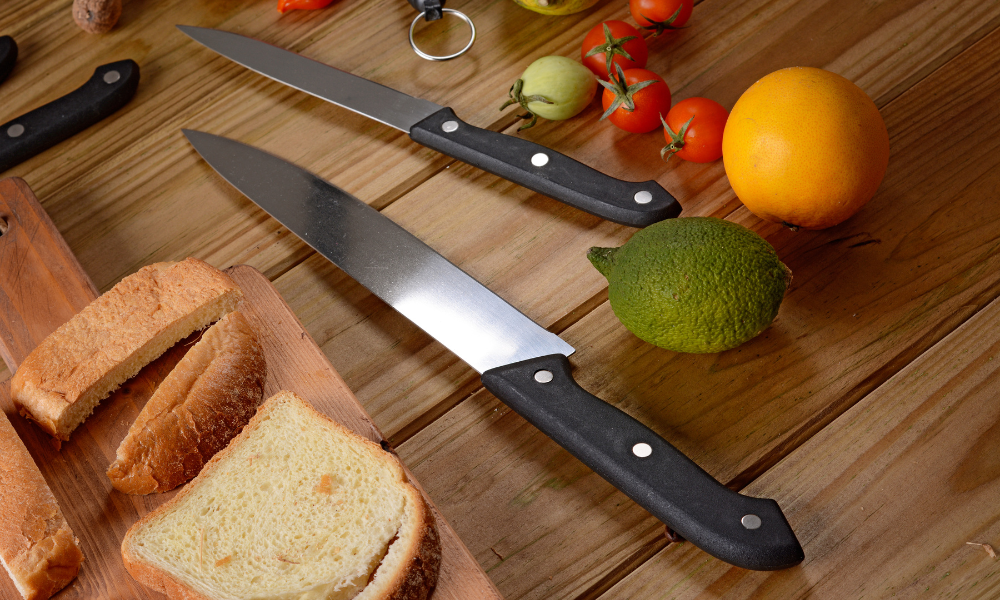Kitchen knives, over time, can become worn out or damaged, necessitating their replacement. However, the disposal of these sharp tools involves more than just tossing them into the trash can. Improper disposal can pose significant safety risks to sanitation workers and others who may come into contact with the garbage. Additionally, thoughtful disposal is crucial for environmental conservation. In this article, we will explore various methods for safely and responsibly disposing of kitchen knives. From local recycling options to donation and repurposing alternatives, we’ll provide detailed guidance to ensure that your old knives are disposed of in a manner that prioritizes safety, complies with local regulations, and considers environmental impact. Whether your knives have simply reached the end of their useful life or you’re upgrading your kitchen tools, understanding how to properly dispose of them is key.
Understanding the Risks
Improper disposal of kitchen knives poses significant risks to waste management workers who might unknowingly encounter them. Sharp blades can cause severe injuries when handled without caution. Furthermore, if not disposed of correctly, these knives can end up in landfills, contributing to environmental degradation. It’s crucial to recognize that every item we dispose of has a potential impact on our environment. Metals take an extremely long time to break down, adding to pollution and resource depletion. By understanding these risks, we are better positioned to take responsible actions that protect both human health and our planet.
Preparing Knives for Disposal
To safely dispose of kitchen cutters, preparation is key. Start by thoroughly cleaning the knife to remove any debris. Once clean, wrap the blade securely in several layers of newspaper or bubble wrap. Then, secure the wrapped blade with tape to ensure it remains covered. For additional safety, place the wrapped knife inside a cardboard box and seal it completely with tape. This preparation prevents the knife from piercing through trash bags and potentially injuring someone. Proper packaging is essential for safely transporting knives to disposal facilities or recycling centers.
Local Waste Management Regulations
It is imperative to adhere to local waste management regulations when disposing of kitchen cutters. Different areas may have specific rules about disposing of potentially dangerous items like sharp blades. To find out your local regulations, you can check with your city or municipality’s waste management department. Their websites often have detailed information on how to dispose of various types of waste safely. By following these guidelines, you ensure that you are not only complying with local laws but also minimizing the risk to those who handle waste.
Recycling Options
Before disposing of old kitchen knives, consider whether they can be recycled. Many knives are made from metals that can be recycled, reducing environmental impact and conserving resources. Read. how do you sharpen kitchen knives. Check with local recycling facilities to see if they accept metal. Some areas have specific scrap metal recycling centers that will take old knives. Recycling your old kitchen utensils not only helps the environment but can also be a more responsible way to clear out unused items from your home.
Donation and Repurposing Options
If your kitchen knives are still in good condition, donating them is a viable option. Many thrift stores, shelters, and culinary schools accept kitchen utensils. Ensure the knives are clean and securely wrapped before donation. Alternatively, old knives can be repurposed in creative ways, such as turning them into tools for gardening or crafts. Repurposing helps reduce waste and can give your old knives a new life outside the kitchen.
Special Disposal Services
For particularly hazardous materials or items, special disposal services may be necessary. Some municipalities offer services for the safe disposal of sharps, which include kitchen knives. These services ensure that dangerous items are handled appropriately and do not pose a risk to waste management workers. Contact your local waste management authority to inquire about available services and how to properly utilize them for disposing of your kitchen cutters.
DIY Disposal Methods
If local disposal services are unavailable, you can manage the disposal of kitchen knives yourself with careful planning. After preparing the knife as described previously, one method is to bury the wrapped knife deep within a solid waste container. This minimizes the chance of the knife being accidentally exposed and causing harm. Always prioritize safety and consider the potential risks involved with any DIY disposal method, ensuring you take all necessary precautions to avoid accidents.
Raising Awareness
Educating others about the importance of safe disposal practices for kitchen cutters is crucial in minimizing risks and promoting environmental responsibility. Share information with friends, family, and the community about how to properly dispose of knives and other hazardous household waste. By raising awareness, you contribute to a safer and more informed community that values sustainability and safety in waste management.
Conclusion
Disposing of kitchen cutters requires careful consideration and adherence to safety practices. By understanding the risks, preparing knives properly, and utilizing local disposal or recycling services, we can significantly reduce potential dangers and environmental impact. Whether you choose to recycle, donate, or dispose of them, handling the disposal of kitchen cutters responsibly is essential for maintaining safety and sustainability in our communities.

